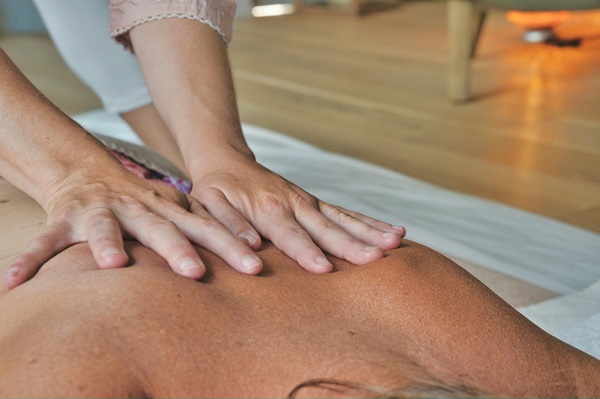Picture this: You wake up one morning, and as you drag yourself out of bed, every movement feels like a battle against invisible forces, your muscles protesting with every step. Whether it’s the relentless demands of your job, the strain of juggling family responsibilities, or the toll of pushing your limits in the gym, the signs of tension and discomfort are impossible to ignore. But fear not, for amidst the chaos of daily life lies a sanctuary of relief: remedial massage therapy.
Read on as we guide you through all there is to know about this therapeutic art form—from answering the key question “What is remedial massage therapy?” to exploring its myriad benefits and techniques.
What is Remedial Massage Therapy?
Remedial massage therapy stands out as a specialized discipline within massage therapy that goes beyond mere relaxation and tension relief. Its primary focus is addressing particular musculoskeletal issues contributing to pain, restricted mobility, or discomfort
Central to the philosophy of remedial massage therapy is the belief in the body’s innate capacity for self-healing when provided with appropriate support and intervention. This philosophy highlights a holistic perspective on wellness, recognizing that physical, emotional, and mental aspects of health are interconnected. In practice, remedial massage therapists focus on understanding the root causes of musculoskeletal issues rather than merely treating surface symptoms. By addressing underlying dysfunctions in muscles, tendons, ligaments, and fascia, remedial massage aims to facilitate the body’s natural healing processes and restore balance.
Comparing remedial and general massage therapy reveals distinct differences in their goals, techniques, and applications. While general massage therapy primarily seeks to induce relaxation and alleviate everyday stress through techniques like Swedish massage, remedial massage therapy employs other specialized techniques, including deep tissue massage, trigger point therapy, and stretching protocols, among others. These techniques are chosen and applied strategically to target specific areas of tension, pain, or dysfunction within the musculoskeletal system.
The suitability of remedial massage therapy compared to general massage therapy depends on individual needs and goals. Individuals seeking relaxation, stress reduction, or a pampering experience may find general massage therapy more suitable. On the other hand, those dealing with chronic pain conditions, recovering from injuries, or seeking to improve mobility and function may benefit more from remedial massage therapy. Its tailored approach and focus on addressing underlying issues make it particularly effective for managing chronic pain, facilitating injury rehabilitation, and enhancing overall musculoskeletal health.
What Do Remedial Massage Therapists Do?
In addition to providing relief through massage, remedial massage therapists’ expertise also lies in identifying and treating the underlying causes of discomfort. Therefore, their responsibilities and day-to-day duties encompass:
- Conducting thorough assessments to evaluate clients’ musculoskeletal health;
- Gathering relevant medical history;
- Conducting physical examinations;
- Assessing posture, range of motion, and tissue quality
- Identifying areas of dysfunction;
- Utilizing their knowledge of anatomy and biomechanics;
- Examining factors such as overuse, poor posture, biomechanical imbalances, and structural abnormalities;
- Developing targeted and personalized treatment plans;
- Using a variety of specialized techniques designed to address specific musculoskeletal issues;
- Educating clients about their condition, treatment options, and self-care strategies;
- Offering guidance on ergonomics, posture, movement patterns, stress management, and exercise techniques to support their client’s well-being beyond the treatment room;
- Monitoring clients’ progress throughout treatment;
- Adjusting their approach as needed to ensure optimal outcomes;
- Tracking changes in symptoms, mobility, and function;
- Collaborating with other healthcare professionals as part of an interdisciplinary approach to care.
What Techniques are Used During a Remedial Massage?
Remedial massage is a comprehensive term that encompasses a variety of different techniques. Some of these techniques include:
Deep tissue massage
Deep tissue massage is a technique used to address chronic muscle tension and pain. Unlike traditional massage techniques focusing on the superficial layers of muscle tissue, deep tissue massage targets the deeper layers where tension and adhesions are commonly found. They do so by applying firm pressure and slow strokes to penetrate through muscle and connective tissue layers, releasing tightness and promoting relaxation.
This technique benefits individuals suffering from chronic pain conditions, muscle stiffness, or limited mobility, as it helps improve circulation, reduce inflammation, and alleviate discomfort.
Trigger point therapy
Trigger point therapy is a specialized technique that targets areas of muscular hyperirritability, called trigger points, which can cause referred pain and dysfunction. These trigger points are often tender to the touch and can cause pain radiating to other body areas. During trigger point therapy, therapists apply sustained pressure to those points to release tension and promote relaxation in the affected muscles.
Stretching techniques
Stretching techniques are essential in improving flexibility, mobility, and overall musculoskeletal function. Therapists use passive and active stretching exercises during treatment sessions to lengthen tight muscles, release tension, and increase joint range of motion. These techniques help address muscle imbalances, lower the risk of injury, and enhance athletic performance.
By promoting flexibility and mobility, stretching techniques contribute significantly to the effectiveness of remedial massage therapy in relieving pain, restoring movement patterns, and optimizing musculoskeletal health.
Cupping therapy
Cupping therapy improves circulation, reduces muscle tension, and aids the body’s natural healing processes. This therapy places special cups on the skin to create suction and lift the underlying tissue. The suction helps promote blood flow to the area, alleviating muscle stiffness, reducing inflammation, and promoting relaxation. Cupping therapy is especially useful for treating chronic pain, muscle knots, and sports injuries.
Dry needling
Dry needling involves using thin needles to target trigger points and release muscle tension in affected muscles or soft tissues. Unlike acupuncture, which aims to balance energy flow, dry needling stimulates the nervous system to deactivate trigger points and alleviate pain while promoting muscle relaxation. This technique effectively reduces muscle tightness, improves flexibility, and restores normal muscle function.
How Does Remedial Massage Complement Other Massage Types?
While remedial massage may be instrumental in addressing specific musculoskeletal issues, other massage types can play complementary roles in supporting overall physical, emotional, and mental health. For example, Swedish massage can help relieve everyday tension and stress, while aromatherapy massage may enhance relaxation and mood through essential oils.
By integrating various massage modalities into a treatment plan, therapists can tailor their approach to meet the unique needs and preferences of each client, ensuring a holistic and personalized experience that addresses both immediate concerns and long-term wellness goals. This collaborative approach allows individuals to experience the benefits of different massage types, improving overall well-being and quality of life.
What Are The Benefits Of Remedial Massage?
Remedial massage therapy shares similarities with medical massages in terms of its targeted approach to treating physical ailments. Therefore, it offers a diverse array of benefits, some of which we’ll explore below:
Immediate relief
Firstly, remedial massage’s primary benefit and overall purpose is the immediate relief it provides from muscle tension and pain. Through the targeted techniques discussed before, remedial massage therapists can quickly alleviate discomfort, allowing clients to experience a sense of relaxation and relief during and immediately after the session.
Physical benefits
Remedial massage also offers a range of physical benefits that extend beyond immediate relief. By addressing muscular imbalances, releasing tension, and improving circulation, remedial massage helps to enhance flexibility, mobility, and overall physical function. Additionally, regular remedial massage sessions can contribute to better posture, reduced injury risk, and improved physical activity performance.
Mental well-being
In addition to its physical benefits, remedial massage promotes mental well-being by helping reduce stress and anxiety. The therapeutic touch and focused attention during a remedial massage can help calm the nervous system, alleviate mental tension, and induce relaxation.
This can lead to improved mood, enhanced mental clarity, as well as a greater sense of overall well-being, making remedial massage a valuable tool for managing stress and supporting mental health.
How Often Should You Get A Remedial Massage?
The frequency of remedial massages depends on individual needs, health goals, and the issues being addressed. Factors like the severity of the condition, rate of recovery, and personal preferences influence how often sessions are needed. It’s best to consult with a remedial massage therapist for personalized wellness planning. They can recommend an optimal schedule for lifestyle, physical activity, and stress levels. Whether managing chronic pain or seeking preventive care, tailored guidance ensures effective treatment and long-term musculoskeletal health.
The Bottom Line
It’s a common misconception that massages are solely a luxury indulgence. But remedial massage therapy is more than that; it’s a lifeline for those grappling with the everyday stresses and strains of modern life. With its targeted approach to addressing specific musculoskeletal issues, remedial massage has the power to alleviate pain, restore mobility, and enhance overall well-being. So, if you know someone who is weighed down by tension, discomfort, or chronic pain, such a massage is the perfect gift to give them.
FAQ:
Are remedial massages worth it?
Yes, remedial massages are worth it for addressing specific musculoskeletal issues, relieving pain, and improving overall well-being. Their targeted approach and tailored treatment plans offer effective solutions for managing chronic conditions and promoting long-term health.
What happens during a remedial massage?
During a remedial massage, a therapist assesses your musculoskeletal health, identifies areas of tension or dysfunction, and applies specialized techniques to address them.
What is the difference between a Thai massage and a remedial massage?
While both Thai and remedial massages offer therapeutic benefits, they differ in techniques and focus. Thai massage involves passive stretching and joint mobilization, influenced by yoga principles, to improve energy flow and flexibility. On the other hand, remedial massage targets specific musculoskeletal issues using techniques like deep tissue massage and myofascial release, aiming to alleviate pain and improve mobility.

